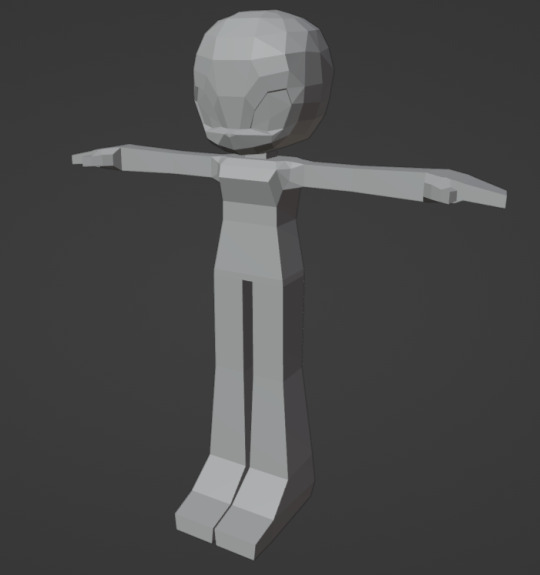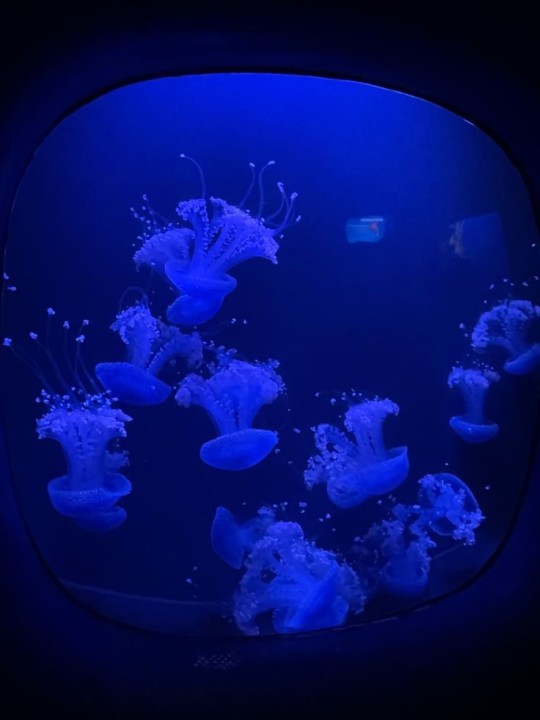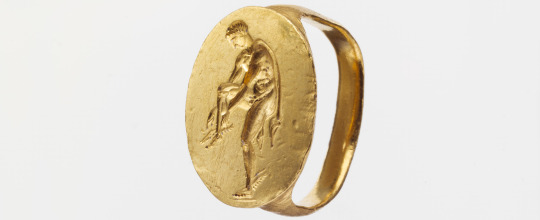#axis of symmetry
Explore tagged Tumblr posts
Text

The Science Research Diaries of S. Sunkavally, p 615.
#carbonic anhydrase#minerals#axis of symmetry#static charge#epidemics#cilia#tetracycline#intracellular parasites#whooping cough#hyoglycemia#Drosophila#DNA polymerase#avian erythrocyte#spontaneous mutation#satyendra sunkavally#theoretical biology#manuscript#calligraphy#cursive handwriting
0 notes
Text
<— Unit 27: Part 3 —>
Trick

F + V —> Eq


F + e —> Eq


C, V, F —> Eq


Eq —> V, F, e


Non-Standard —> Standard

Page 76
#aapc1u27#ellipse#ellipses#graphing ellipse#axis of symmetry#horizontal axis of symmetry#vertical axis of symmetry#focus#eccentricity#vertices
0 notes
Text
Parabolas

X

X


.
0 notes
Text
traditional art is fun until you have to draw something symmetrical
#worse if its something symmetrical on both the y and x axis....symmetry tool how i miss you...#could i draw this digitally? yeah. but ive already committed to doing all of these traditionally so here we are.#usually i like traditional art better i like the feeling of physically putting ink on paper. but.#anyways time to draw the four sword four times. why couldnt it be like. the two sword
2 notes
·
View notes
Text

i shouldve been asleep 7 hours ago. i opened up blender just to quickly check out a couple things and then suddenly i was modelling jerry. weirdly higher poly than rig or squabble, super scuffed, but i am indeed able to model in blender. i need to go to beddddddd
#repurposed rigs head with a ton of work. idk why i didnt work off squabble's head instead#rambles#3d adventures#aughhhh learning's learning. i'll take whatever hours i can focus for. however i would also like to wake up before 2 pm sometime soon#i dont know if theres a symmetry mode. i've just been splitting it in half then duplicating + merging#i know there's symmetrize but i couldnt figure out how to make it work properly? i couldn't figure out how to change which axis it acts on#and with a supremely quick skim i couldnt see like another symmetry tool. but istg ive used it previously#but i absolutely could not find it
13 notes
·
View notes
Text

1 note
·
View note
Text
Take the letter "A," flip it about a vertical axis passing through its apex, and it will provide you with a perfect replica of the original.
"The Fabric of the Cosmos" - Brian Greene
1 note
·
View note
Text
ARCHITECTURAL DESIGN - ORDERING PRINCIPLES
consider these principles "fundamental ideas" that serve as the foundation for a system. these principles can structure your design and bring order to the lay-out of a building.
AXIS
SYMMETRY
HIERARCHY
TRANSFORMATION
DATUM
RHYTHM
PATTERN
REPETITION
#order#architecture#design#principles#axis#hierarchy#symmetry#transformation#datum#rhythm#pattern#repetition
0 notes
Text
Paraboloidal
“You know,” Lakshmi mused. “I really hate math.”
Sam had finally figured out how to make alcohol on the ship. This may or may not have been a good thing, but Campbell hadn’t banned it, so the rest of them were taking advantage.
“You’re a physicist,” Lucian said incredulously.
“Yeah, but physics is just physics.” Lakshmi waved her bottle in emphasis. Ally, slumped into her side, snorted. “I get it when you have to calculate the strength of gravity or whatever, I just hate it when someone says ‘this pringle’s a parabola, actually,” and you have to nod along like that makes sense.”
“Pringles are actually hyperbolic paraboloids,” Sam corrected, the only sign of his inebriation a slight hesitation before “paraboloids.”
“That shit!” Lakshmi gestured. “That’s exactly what I’m talking about.”
“Think it’s better than your tachyon negative-mass bullshit,” Lucian muttered.
Lakshmi straightened. They all braced for an argument, but she just said “fuck you” before bursting into laughter. Shae rolled their eyes.
#A parabaloid has one axis of symmetry but no center of symmetry#Listen. I do not know math#I am an innocent ecologist with access to wikipedia#I don't really know physics either but I like quantum enough to have done some studying#...still not much#let's play a game of “who has what pronouns at this point in the story”#I keep changing them and also they change in the story#my writing#creative writing#library of babel#unedited#original characters#my ocs#space romp
0 notes
Text
Imagine yourself submerged in the prehistoric ocean. There are no fish, instead the only life forms consist of feather-like sessile organisms that sit on the seabed, filtering the current. The early organisms that evolved out of this, such as Jellyfish and Starfish, had radial anatomy. Their body structure entails a central axis from which you can split everything else. These bodies are simple, not designed for active mobility, lacking a ‘forwards’ or ‘backwards’. They didn’t even have eyes, instead interacting with and responding to the world via photoreceptive cells. What emerged from this were two developments: the evolution of complex eyes and the emergence of bilateral anatomy in early vertebrates and arthropods. In contrast to radial anatomy, bilateral anatomy entails an organism that can be split down the middle with rough symmetry. This is to say that they are built for direction. A body that is built for mobility entails significantly more complex behaviour behind its operation. Behaviour, in this sense, also becomes significantly more directed. These creatures now living in the ocean or on the sea-floor now begin to directly interact with one another. The mechanisms facilitating this interaction become pretty apparent in the fossil record; eyes, claws and antennae. The evolutionary consequences of this are the emergence of a complex nervous system alongside the presence of predation and, as Godfrey-Smith puts it “[From this point on] The mind evolved in response to other minds”.
551 notes
·
View notes
Text




did you know that jellyfish are radially symmetrical? they are symmetrical because of a central axis that runs through the length of their body. They have an upper and lower part, but no left or right sides. They are different from other types of animals such as reptiles, fishes, birds and arthropods, which exhibit bilateral symmetry. I love them
#spencer reid#criminal minds#mgg#doctor spencer reid#mgg pics#spencer reid x reader#spencer reid fluff#spencer reid criminal minds#spencer reid x y/n#spencer reid x oc#spencer reid smut#spencer reid aesthetic#spencer reid moodboard#criminal minds moodboard#criminal minds imagine#mgg pic#mgg moodboard#moodboard#dating spencer reid#spencer reid x you#aquarium#jellyfish
520 notes
·
View notes
Text

I know I have drawn this shape so often already, but the process of drawing it is so soothing.
And for that, I have drawn a kind of step-by-step guide how to draw that shape in the top of this drawing:

(from left to right: ) [sorry in advance if I make it sound more complicated than it actually is. If you want to draw it, I would advice you to focus more on these illustrations rather than on my gibberish-text.]
1. draw a 2-dimensional Cartesian plane - or, in other words: just draw a cross like depicted
1.1. mark 2 points on the y-axis/vertical line with same distance to the coordinate origin, then mark 2 points on the x-axis/horizontal line with the same distance to the coordinate origin. (The markings on the y-axis need to be farther away from the origin than the markings of the x-axis)
2. connect the 4 marked points like depicted above. This is a function plot of a tractrix. (it has two mirror symmetry axes. )
3. draw an ellipse and connect the two markings on the x-axis. This becomes a kind of "belt" for the pseudosphere (4th picture)
4. part the ellipse into whatever-amount-you-want of partings (like you would cut a cake) and slightly mark these.
5. now imagine you cut that shape horizontally on the outer surface. (In the 5th picture I depicted that with red-ish pen across the pseudosphere. ) -
6. then the cut shape needs to be "(shape) shifted". For that we use a set of marked points we did in step 4). Furtherly, we "cut" the ellipse open, and push one end of it to the top, and the other end to the bottom. (depicted in picture 6 )
7. Then we connect the rest to get that shape:

#math#mathematics#art#math art#geometry#my art#dini surface#dini#curvature#constant negative curvature#pseudosphere#geometric visualization#visualization#visualisation#geometric#space#shapes#shape#shapeshifting#math drawing#geometry drawing#geometric drawing#mathy
164 notes
·
View notes
Text
<— Unit 16 — Unit 17: Parabolas — Unit 18 —>
Unit 17: Parabola
Part 1 —>
Basics

Misc

Domain & Range

Min & Max & x-intercepts

Graph —> Vertex Form


*new point, not new porn. Too lazy to change it.
Quadratic —> Graph

Page 45
#parabola#domain & range#quadratic formula#axis of symmetry#vertex#vertex form#quadratic form#graphing#aapc1u17
1 note
·
View note
Text

Drew Ed asking Double D to prom instead of finding the Axis of Symmetry, vertex, domain, and range
88 notes
·
View notes
Text
Some Greek Art Vocabulary

for your next poem/story
Alabastron - A small vase for olive oil, often scented.
Amphora - A two-handled terracotta storage jar used by the ancient Greeks to hold or measure oil, wine, or milk.
Calyx - The external, cup-shaped, leafy part of a flower.
Calyx-krater - A krater with handles in the cupped shape of a calyx.
Epitaph - A funerary inscription.
Krater - A large pottery vessel with a mouth broad enough to allow a jug to be dipped into it; used for mixing wine with water in ancient Greece.
Negative space - The area around the decorative subject on a work of art; the external or outside area that defines the subject.
Palmette - An ornament of radiating petals on a calyx-shaped or budlike base; along with the sphinx, palmettes often top Greek grave markers.
Positive space - The area on a work of art where the subject is represented; the internal area.
Registers - In art, horizontal bands of images that often appear in vertical series on walls, vases, and so forth.
Relief - A sculpted surface in which the decorations stand out, in varying degrees of depth; reliefs are meant to be viewed frontally, not in the round.
Sphinx - A fabled creature that is half human and half animal; in Greek art and legend the sphinx has the head and torso of a woman.
Stele - An upright slab of stone usually inscribed and sometimes decorated with designs or figures that are painted or carved in relief; used by the Greeks as grave markers or for displaying public notices.
Symmetry - The duplication of an image on either side of a real or imaginary central axis.
Terracotta - Clay that has been fired at a relatively low temperature, brownish-red or buff in color.
Source ⚜ More: Word Lists
#greek art#terminology#word list#writing inspiration#writeblr#dark academia#writing reference#spilled ink#creative writing#light academia#literature#writers on tumblr#poets on tumblr#writing prompt#poetry#art vocab#writing resources
134 notes
·
View notes
Text
Aries - Libra Axis: Tells a story about taking action vs. indecision, inaction, and procrastination. Tells a story about selfishness but also giving to the detriment of self, lack of boundaries, assertion, charm, persuasion, force, peace and war, leadership and cooperation, independence vs. partnerships, passion, romance, self-awareness vs. shallowness and detachment, insensitivity vs. tact, cheating and deception, winning and losing, honesty and bravery. Tells a story about lovers and fighters.
Taurus - Scorpio Axis: Tells a story about control, power, jealousy, resentment, stubbornness, indulgence and sensuality, comfort and thrill, safety and danger, possessive behavior, materialism, emotional strength and influence, inner security or contentment and inner empowerment and passion, willpower, revenge, grudges, manipulation, obsession, seduction, self-destruction, transformation and rebuilding. Tells a story about self-mastery and self-esteem.
Gemini - Sagittarius Axis: Tells a story about communication, learning, knowledge, teaching, exploration of mind, body, and the world, trickery, con artists, betrayal, support, lies and truth, versatility, duality, variety, curiosity, superficiality vs. depth, philosophy, morals, logic, spontaneity and fickleness, symmetry vs. asymmetry, restlessness, carelessness, freedom, exaggeration vs. factual, movement, cunning wit and intellect as well as wisdom, optimism vs. skepticism, dissembling, analyzing, deception, schemes, gossip, boasting, charm vs. tactlessness, and promises. Tells a story about storytelling - lessons and adaptation.
Cancer - Capricorn Axis: Tells a story about protection, self-preservation, endurance, practicality, emotions and rationality, defense vs. offense, vulnerability, attachment, clinging vs. self-reliance, sentiment, nostalgia, home and family, ambition, purpose, clans, tribes, societies, private world vs. external/outer world, moods, cycles, authority, parents/mothers and fathers, caution, responsibility, duty, patience, compassion vs. cruelty, intuition, shrewdness, strategy, contentment vs. dissatisfaction, security vs. insecurity. Tells a story about needs and being uninhibited, as well as control and discipline.
Leo - Aquarius Axis: Tells a story about leadership, charisma, confidence, individuality, self-expression, creativity, innovation, the power of one vs. the power of the many, attention, compulsion, pride, ego, play and discovery, experimentation and rebellion, drama, curiosity, socialization, influence, dignity, generosity, benevolence and/or common good, chaos, destruction, passion vs. dispassion, humanity, divinity, fellowship, organized groups, separation or standing apart, control or tyranny, strangeness and what's rejected vs. what's accepted or even celebrated. Tells a story about the king/queen/politician and anarchist/rebellion/revolutionist.
Virgo - Pisces Axis: Tells a story about the spirit and body, healing, helping others, service, caring for others, listening to your body or your intuition, purity vs. corruption, compassion, sensitivity, impressions, flexibility, logic, imagination, being receptive, mysticism, confusion, illusions, clarity, distillation, categorizing, researching, analyzing - a thorough search for facts/truth. Tells a story about sacrifice, empathy, saving others, discernment, efficiency and productivity vs. procrastination and rest, modesty, free and flowing energy vs. precise and predictable energy, perfectionism vs. admiring flaws, realism or skepticism vs. idealism, details vs. big picture. Tells a story about the dreamer and the worker, the ability to make our dreams come true.
#zodiac#astrology#zodiac signs#polar opposites#aries#taurus#gemini#cancer#leo#virgo#libra#scorpio#sagittarius#capricorn#aquarius#pisces
391 notes
·
View notes